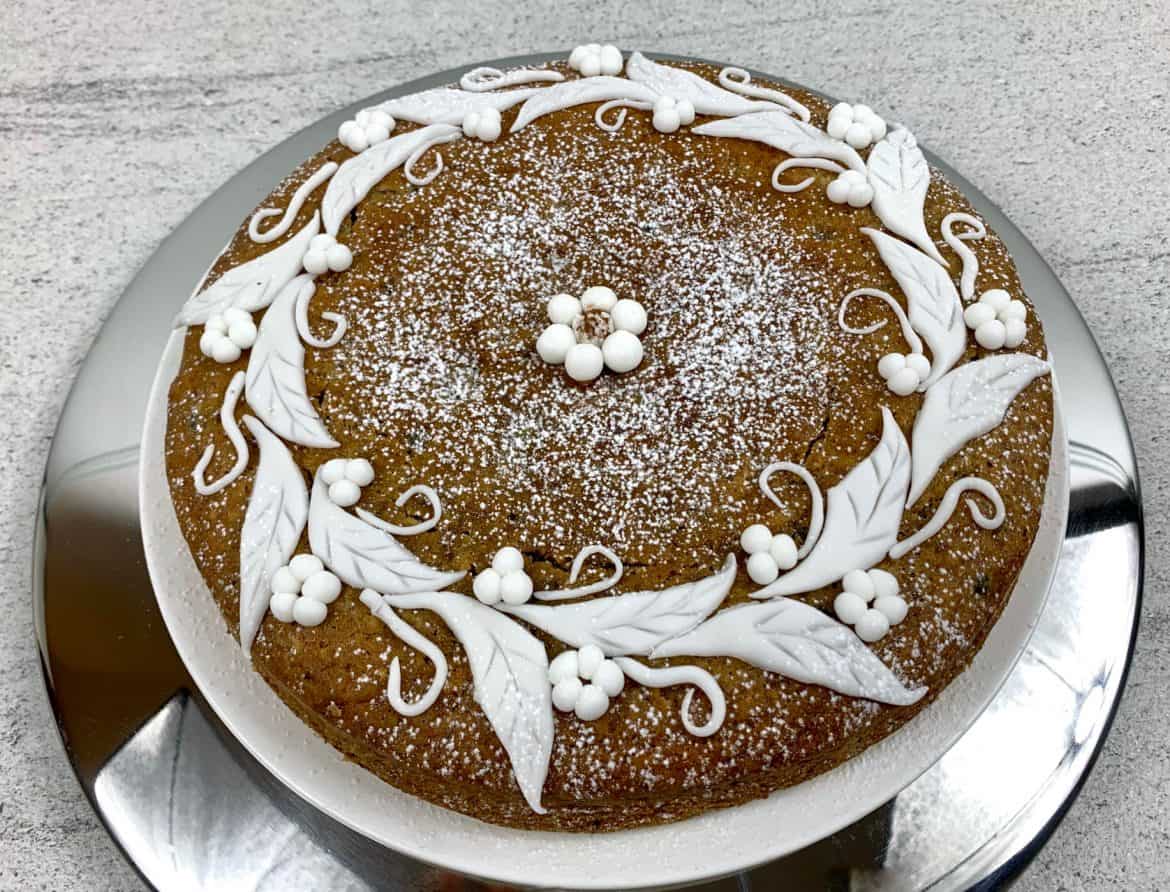Fanouropita (Phanouropita) cake or else known as St Phanourios cake is a delicious moist and aromatic Lenten cake. It is also widely known the cake of ‘lost things’. It is named after St Fanourios. The verb ‘fanerono’ in Greek means to reveal or to present.
History of Saint Fanourios and Fanouropita (Phanouropita) cake
Around 1500AD, in the island of Rhodes (some claim Cyprus), an icon of St Fanourios was discovered. St Fanourios was unknown to Christianity up to that point in time. He is depicted with a candle in his right hand and hence his name of ‘revealing or presenting’. Tradition has it that St Fanourios will help you find what you have lost by revealing this. That may be a physical item or spiritual guidance. In fact in the old days, unmarried women used to bake this cake so that they can ‘find’ their future husband.

What is Fanouropita (Phanouropita) cake?
St Fanourios cake (Fanouropita) traditionally is prepared on the even of St Fanourios day, ie on 26th of August and is taken to the church evening mass to be blessed. St Phanourios day is celebrated on the 27th of August. According to custom, the cake is round , approximately 25-30cm, has to be sliced into 40 pieces and be enjoyed by a least seven people.
Nowadays, Fanouripita is prepared any day and not just on the saint’s Memorial Day. The cake is so easy to make and so delicious, combining aromatic spices such as cinnamon and clove with orange zest.
Customarily Phanourios cake has either seven, nine or eleven ingredients (odd numbers). The ingredients I use for this fuss free Fanouropita cake recipe are nine. These are (self-raising) flour, sunflower oil, fresh orange juice, baking soda, orange zest, sultanas, walnuts, and cinnamon. Whilst some recipes call for olive oil, I use sunflower oil as it makes a lighter cake.
This is a super easy recipe that can be prepared in as little as 10 minutes.
Fanouropita (Phanouropita) cake preparation
Gathering ingredients
I always start by gathering all the ingredients , laying them out in the kitchen counter and then proceed with the recipe. I find it a lot easier and thus I make sure I have not missed an igredient.
As this Lenten vegan cake is so easy and quick to make, I also preheat the over at this point too.
Grate the oranges and keep the zest. Blitz the walnuts in a food processor and set aside. Squeeze 3-4 oranges and set aside the fresh orange juice.
Fanouropita Tips
- For a juicer Fanouropita cake, I soak the sultanas for 30 minutes in a water and orange juice. Place sultanas in a bowl and pour water and orange juice.
- For a tastier Fanouropita (Phanouropita) cake, soak the sultanas in a mixture of cognac and water or Rum and water. Alcohol evaporates whilst baking so you will be left with those lovely flavours.
- Alternatively , soak sultanas in a water and cinnamon tea.
- To avoid having sultanas at the bottom of the cake, add the sultanas in flour, ie coating them and then proceed to incorporate them in the cake batter.
Similar recipes
Walnut based cakes
If you love walnut based cakes and like a little bit os syrup, then try my Walnut cake recipe (Karidopita) and Karidopita with breadcrumbs (Walnut cake with breadcrumbs).
Syrupy walnut and phyllo delights
If you like a crunchy crispy syrupy desserts then Gianniotiko/Giannotiko- Syrupy rolled Phylo and Kataifi pastry with walnuts, is the one for you! Crunchy phyllo and Kataifi, the perfect marriage of baclava (baklava) and Kataifi!





2 comments
How did you make the beautiful icing decoration!?
Dear Jazabwl, the decoration is fondant icing that I shaped with stencils. You can also use various moulds for shapes, which is a lot easier. Hope this helps 🙂
Vasiliki/Vicki